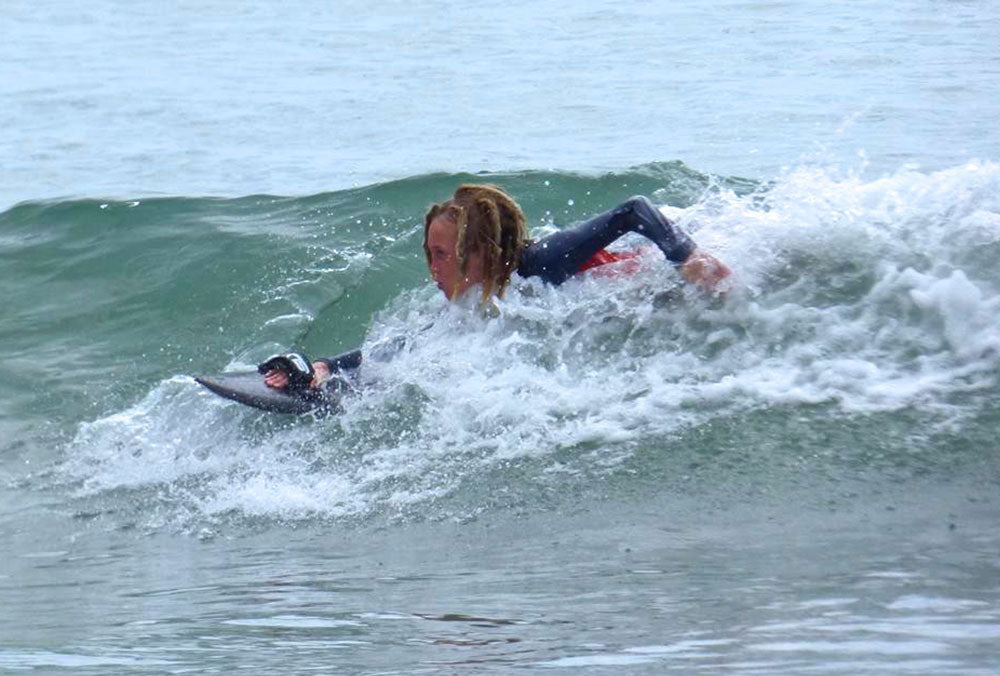
Surfing may have been observed by British explorers at Tahiti in 1767. Various European explorers witnessed surfing in Polynesia. It was in Hawaii that the art of standing and surfing upright on boards was invented. They brought many of their customs with them including playing in the surf on Paipo (belly/body) boards. AD 400 in Hawaii, where Polynesians began to make their way to the Hawaiian Islands from Tahiti and the Marquesas Islands. Modern surfing as we know it today is thought to have originated in Hawaii.

In Polynesian culture, surfing was an important activity. The first gold medalists of the Tokyo 2020 surfing men and women's competitions were, respectively, the Brazilian Ítalo Ferreira and the American from Hawaii, Carissa Moore. In 2016 surfing was added by the International Olympic Committee (IOC) as an Olympic sport to begin at the 2020 Summer Olympics in Japan. However, there are still many popular surf spots around the world: Teahupo'o, located off the coast of Tahiti Mavericks, California, United States Cloudbreak, Tavarua Island, Fiji Superbank, Gold Coast, Australia. Surfers from around the world flock to beaches like Backdoor, Waimea Bay, and Pipeline. ĭuring the winter season in the northern hemisphere, the north shore of Oahu, the third-largest island of Hawaii, is known for having some of the best waves in the world. As of 2013, the Guinness Book of World Records recognized a 23.8 m (78 ft) wave ride by Garrett McNamara at Nazaré, Portugal as the largest wave ever surfed. Recently with the use of V-drive boats, Wakesurfing, in which one surfs on the wake of a boat, has emerged. Surfing-related sports such as paddle boarding and sea kayaking that are self-propelled by hand paddles do not require waves, and other derivative sports such as kite surfing and windsurfing rely primarily on wind for power, yet all of these platforms may also be used to ride waves. In tow-in surfing (most often, but not exclusively, associated with big wave surfing), a motorized water vehicle such as a personal watercraft, tows the surfer into the wave front, helping the surfer match a large wave's speed, which is generally a higher speed than a self-propelled surfer can produce. Three major subdivisions within stand-up surfing are stand-up paddling, long boarding and short boarding with several major differences including the board design and length, the riding style and the kind of wave that is ridden.

The closest form of body surfing using a board is a handboard which normally has one strap over it to fit on one hand. Body surfing, in which the wave is caught and ridden using the surfer's own body rather than a board, is very common and is considered by some surfers to be the purest form of surfing. Other types of surfing include knee boarding, surf matting (riding inflatable mats) and using foils. Ancient cultures often surfed on their belly and knees, while the modern-day definition of surfing most often refers to a surfer riding a wave standing on a surfboard this is also referred to as stand-up surfing.Īnother prominent form of surfing is body boarding, where a surfer rides the wave on a bodyboard, either lying on their belly, drop knee (one foot and one knee on the board), or sometimes even standing up on a body board. The Moche of Peru would often surf on reed craft, while the native peoples of the Pacific surfed waves on alaia, paipo, and other such water craft.

The term surfing usually refers to the act of riding a wave using a board, regardless of the stance. Waves suitable for surfing are primarily found on ocean shores, but can also be found in standing waves in the open ocean, in lakes, in rivers in the form of a tidal bore, or in wave pools. Surfing is a surface water sport in which an individual, a surfer (or two in tandem surfing), uses a board to ride on the forward section, or face, of a moving wave of water, which usually carries the surfer towards the shore. World Surf League (WSL), International Surfing Association (ISA)


 0 kommentar(er)
0 kommentar(er)
